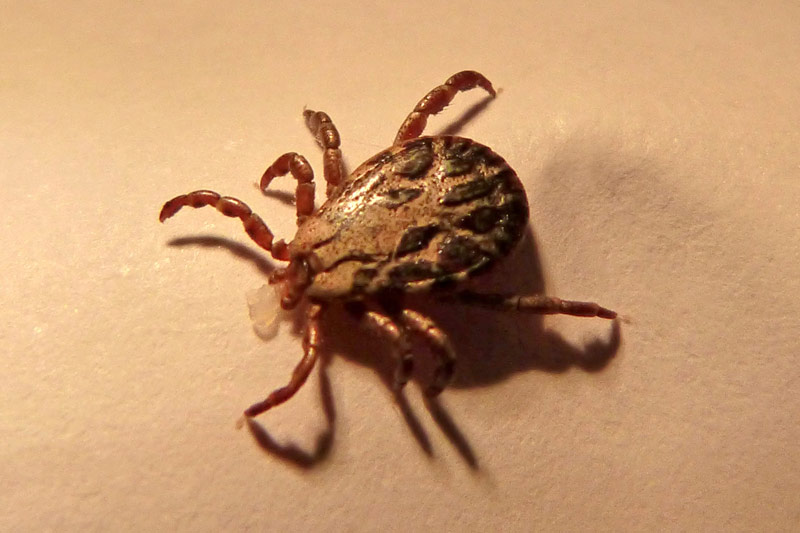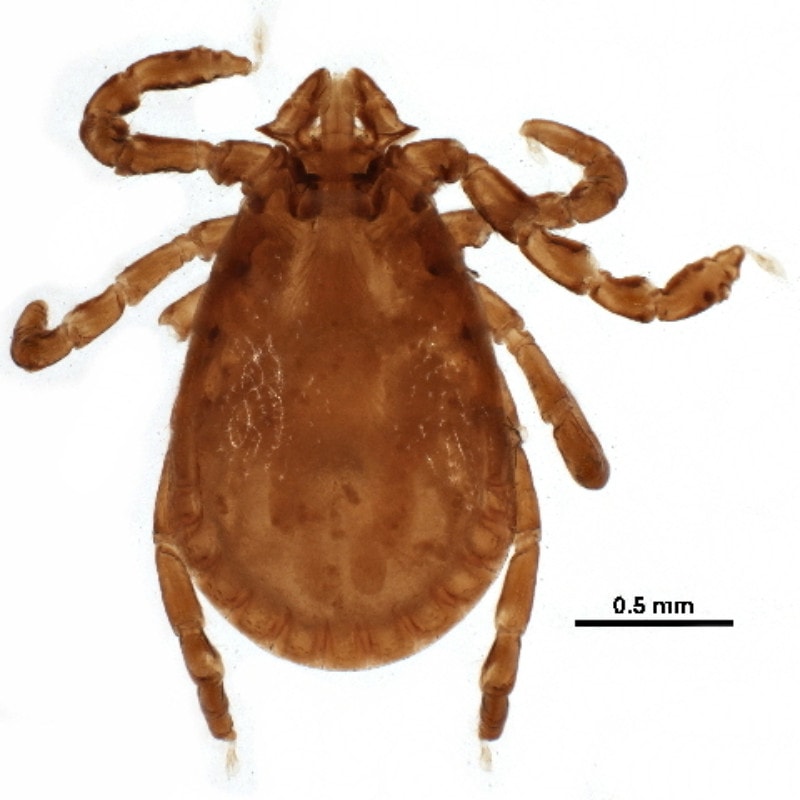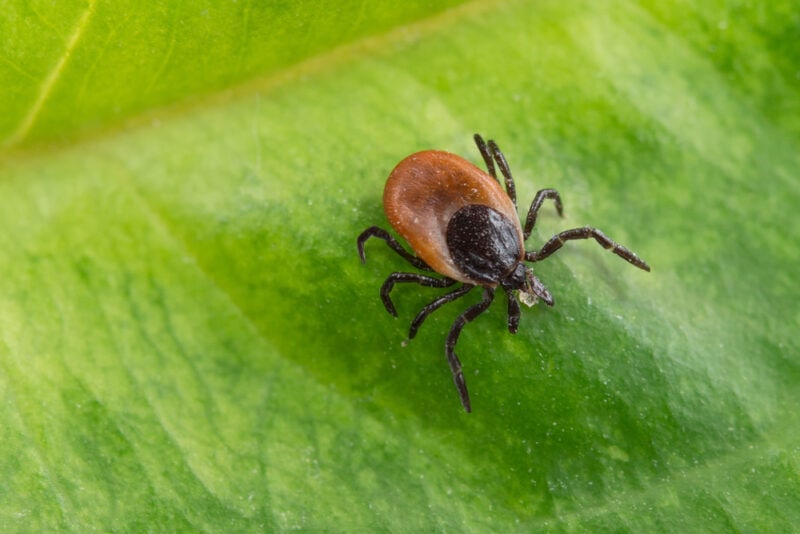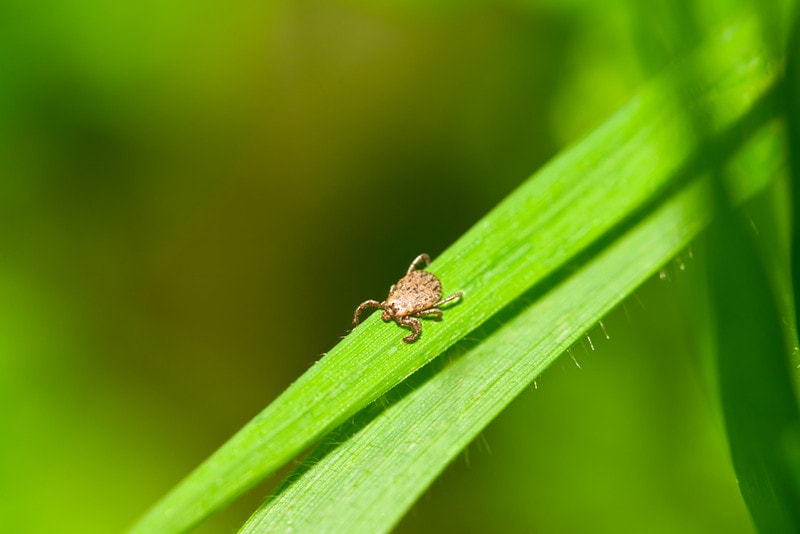8 Types of Ticks in Arizona (With Pictures)
-
Samantha Reed
- Last updated:

While the desert may be mistaken for a place of minimal life, Arizona isn’t just a desert; its wildlife is as vast as its different climates. If you are a fan of hiking or you have outdoor pets, chances are you’ve heard of a dangerous group of little hitchhikers: ticks. Ticks are a major health threat in certain areas of the country, and Arizona is no different. Arizona is home to several species of ticks, and one is capable of living entirely indoors.
Ticks are known carriers of some nasty diseases, and while considered rare in Arizona, they’re not unheard of and are still a cause for concern. It is important to know that ticks are dangerous no matter their current life stage. Let’s look at some of the most common ticks you will find in Arizona.
The 8 Types of Ticks in Arizona
There are 8 types of ticks commonly found in Arizona. While out exploring the beautiful Sonoran Desert or hiking through the forested Williams and other Northern cities, you may encounter these ticks.
1. Rocky Mountain Wood Tick
| Name: | Dermacentor andersoni |
| Color: | Brown, becoming grayish when engorged |
| Shape: | Oval, flattened |
| Size: | 1/8 inch |
Found only in the northern parts of Arizona, the Rocky Mountain Wood Tick makes its home in the brushy areas. These ticks often carry Rocky Mountain Spotted Fever and Colorado Tick Fever. Rocky Mountain Spotted Fever can be deadly if not treated early with the correct antibiotics, but most people who are infected will experience a rash, fever, and headache.
The Rocky Mountain Wood Tick rarely lives below 4,000 feet, and they are most commonly found in shrublands, wooded areas, grasslands, or hiking trails. The ticks are red in color, and the female ticks have a white design decorating their head and back. Rocky Mountain Wood Ticks look very similar to American Dog Ticks, the main difference being their elevation preference.
2. Brown Dog Tick

| Name: | Rhipicephalus sanguineus |
| Color: | Reddish brown, gray-blue when engorged |
| Shape: | 1/8 inch |
| Size: | Oval, flattened |
The Brown Dog Tick is the most common type of tick found in Arizona. These household pests are one of the few ticks on earth that can live out their entire life indoors. They can stay and create their own infestation when they enter your home.
Brown Dog Ticks are reddish-brown before feeding, but the parasites will more than double in size when engorged with blood. Most commonly, these ticks aren’t discovered on their hosts until after they’ve already been attached and feeding for hours.
Thankfully, you have about a 6-hour window to discover the tick on yourself or your pet before it possibly transmits Rocky Mountain Spotted Fever. If you have been to an area with a known infestation, check yourself and your pets carefully. Brown Dog Ticks spread quickly and thrive in indoor environments across the state.
3. Rabbit Tick

| Name: | Haemaphysalis leporispalustris |
| Color: | Tan to reddish tan |
| Shape: | More rectangular |
| Size: | less than 1/8 inch in length |
Unlike other species of ticks on our list, the Rabbit Tick primarily feeds on rabbits, hence its name. These picky eaters carry Rocky Mountain Spotted Fever, and they love the arid desert and consistently cause a massive problem for the wild rabbit population in the Arizona deserts.
While Rabbit Ticks rarely feed on humans, they should only be a cause for concern for you if you regularly handle wild rabbits. You can find Rabbit Ticks near the head, ears, and eyes of a wild rabbit. These ticks are considered a three-host organism, meaning they change their host throughout their life cycles. For example, an immature Rabbit Tick can be found feeding on ground-dwelling birds or other small mammals, like mice.
4. Winter Tick or Moose Tick
| Name: | Dermacentor albipictus |
| Color: | Reddish-brown with white pattern, or dark brown with white crosshatch |
| Shape: | Oval |
| Size: | approximately ¼ inch in length |
While it carries the name the Winter Tick, or the Moose Tick, they are common in the desert, especially during the cooler winter months. The ticks frequently go after household dogs and wild animals like coyotes, deer, horses, and cattle.
Winter Ticks rarely bite humans and have not been found to carry diseases like other ticks on our list. While they don’t carry diseases, a large infestation can cause severe problems for the hosts: anemia, skin irritation, hair loss, and even death.
You can find Winter Ticks mostly in areas with lots of hoofed animals, so cattle and horse ranches are also at risk. The Winter Tick is a one-host tick, meaning it feeds on the same host during all three life stages. You can find them most frequently during the fall and winter, and if you find one, there are others. A moose, for example, can be covered in over 100,000 Winter Ticks at one time.
5. Soft Ticks
| Name: | Argasidae |
| Color: | Size and color vary greatly. |
| Shape: | More rounded body and lack an external jaw. |
| Size: | Size varies greatly |
Most of the ticks on our list are hard ticks; they have harder shells and typically wait for their potential host to walk past. Soft ticks, of which there are over 150 different species, live in rodent burrows and feed on their hosts while they sleep. Soft ticks are rounder, and their mouth is located on the underside of their abdomen rather than having an external jaw like hard ticks.
Soft tick bites are typically painless, and most people don’t even realize they have been bitten. Soft ticks can fully feed in less than an hour, but even that short time can be dangerous. Soft ticks transmit Tick Born Relapsing Fever (TBRF), an infection that leaves the victim with high fever, headaches, and muscle aches.
The symptoms may disappear after a week, but the cycle can continue for several weeks if the victim is left untreated. Soft Ticks are dangerous because they transmit TBRF to humans and to any pets they choose as victims.
6. Western Black-Legged Tick

| Name: | Ixodes pacificus |
| Color: | Brownish black with an orange-brown abdomen |
| Shape: | Oval shaped |
| Size: | A little less than an inch |
The Western Blacklegged Tick makes its home in forests and the shrubbery surrounding the woods. You rarely see Western Blacklegged Ticks in open areas and grassy fields, as these ticks require humidity to survive.
You can count yourself safe from these ticks since they rarely feed on humans. Western Blacklegged Ticks prefer to feed on lizards. The little pests are one of the few in Arizona that carry Lyme disease, so always be cautious if you travel through or live in their territory.
7. Pacific Coast Tick

| Name: | Dermacentor occidentalis |
| Color: | Dark brown body with off-white dorsal shield (back) |
| Shape: | Oval / Almond-shaped |
| Size: | Anywhere from 0.03 inches to 0.5 inches |
The Pacific Coast Tick is primarily found in California, but it has also made its home in the sunshine state. Adult Pacific Coast Ticks can be found year-round but tend to peak in activity during April and May.
The Pacific Coast Tick changes its preferred host based on its current life stage. The immature stages feed on rodents and other small mammals. Adults, however, readily feed on humans, cattle, horses, and deer. These ticks don’t typically feed on dogs.
Pacific Coast Ticks are dangerous because they can transmit multiple diseases, including Colorado Tick Fever. Pacific Coast Ticks also commonly bring Spotted Fever. People who have been bitten and fed on by one of these ticks often mistake the wounds for bites caused by other insects and spiders.
8. Adobe Tick
| Name: | Argasidae |
| Color: | sandy brown to reddish-brown to dark brown. |
| Shape: | Rounded |
| Size: | About 1/4 of an inch in length |
The Adobe Tick is rounder and has a concealed mouth on its underside rather than on its head.
The Adobe Tick only takes thirty minutes to feed, and its bite is painless. You can find the Adobe Tick most often feeding on small rodents, but sometimes humans near these rodent nests can become a meal. Soft ticks like the Adobe Tick make their homes inside the nests of small mammals, and if you have a rodent problem in your home or on your property, these ticks aren’t far behind.
Final Thoughts
While hundreds of tick species are found worldwide, only a select few call Arizona their home. Many species of ticks pass through the Sunshine State, but few make it a permanent residence. While living in Arizona, you are more likely to encounter these eight species of ticks than any other type.
Because ticks feed on the blood of their hosts, they can transmit diseases from animal hosts to human hosts, meaning you should take the threat of ticks in your area seriously.
Different ticks transmit various diseases. Not every tick carries and transmits Lyme disease, and not every tick transmits Tick-Borne Relapsing Fever. If a tick is found on your skin, it should be removed immediately. Usually, ticks must feed on their host for hours before transmitting disease. Quick removal and treatment are the best methods of reducing your chances of infection and other unwanted side effects.
Featured Image Credit: Catkin, Pixabay
Contents
